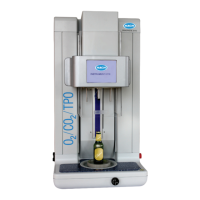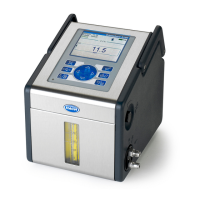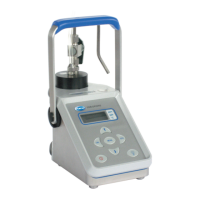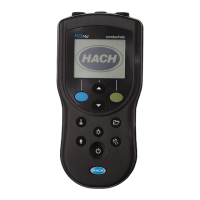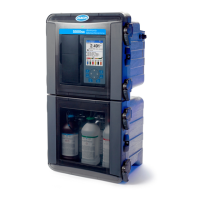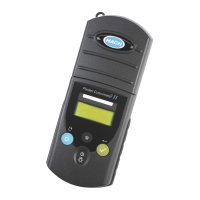20
Installation
3.2 Installation check list
To complete the installation, proceed to the following actions:
1. Follow the installation instructions in this section carefully.
2. On completion, verify once more that everything is properly connected.
3. If using the instrument with a TC sensor it is very important to ensure the purge gas supply
has been connected properly and has been turned on, and that a purge safety backup unit
has been installed. Refer to section 3.8.1 on page 33.
4. Turn the instrument on and set the operating language.
5. Enter the default login credentials “1007” for the ID and “1234” for the password. Refer to
Section 5 Start up on page 45.
6. Change the default login and set the security levels, users ID’s and passwords. Refer to
User management on page 92.
7. Configure the instrument and measurement channels.
8. For the K1200 sensor, verify that the sensor cap selected (i.e. low or high range: K1200-L or
K1200-H) corresponds to the sensor in use. Refer to section 7.2 on page 52.
9. Enable thermal cutoff and set it to the minimum possible value (e.g. 10°C if the liquid in the
sample line is at 0-5°C). This is critical to ensure long-term stability. Refer to section 7.2 on
page 52.
10. Set the measurement interval according to your response time needs. Refer to section 7.2
on page 52.
11. Enable the calibration timer and set the number of days to 180 days (6 months) or
according to your quality needs to ensure a regular sensor calibration. Refer to section 14.2
on page 100.
12. Enable the service timer and set the number of days to 360 days (1 year) or according to
your quality needs to ensure a regular sensor service. Refer to section 14.2 on page 100.
13. If required, program the relay and analog outputs to ensure an event is set when a
calibration or service is required. These can be programmed for each as custom events.
Refer to section Section 9 on page 65. Note that when a calibration or service timer has
expired, the instrument will automatically display this information as a warning message.
Refer to List of events and alarms on page 109.
14. Perform a barometric sensor calibration.
15. Perform an external pressure calibration (optional).
16. Set the alarm thresholds.
The instrument should now be ready for operation. If a problem should arise. Refer to K1200
sensor maintenance on page 103. If the difficulty cannot be overcome, please contact your
Hach representative who will be happy to assist you.

